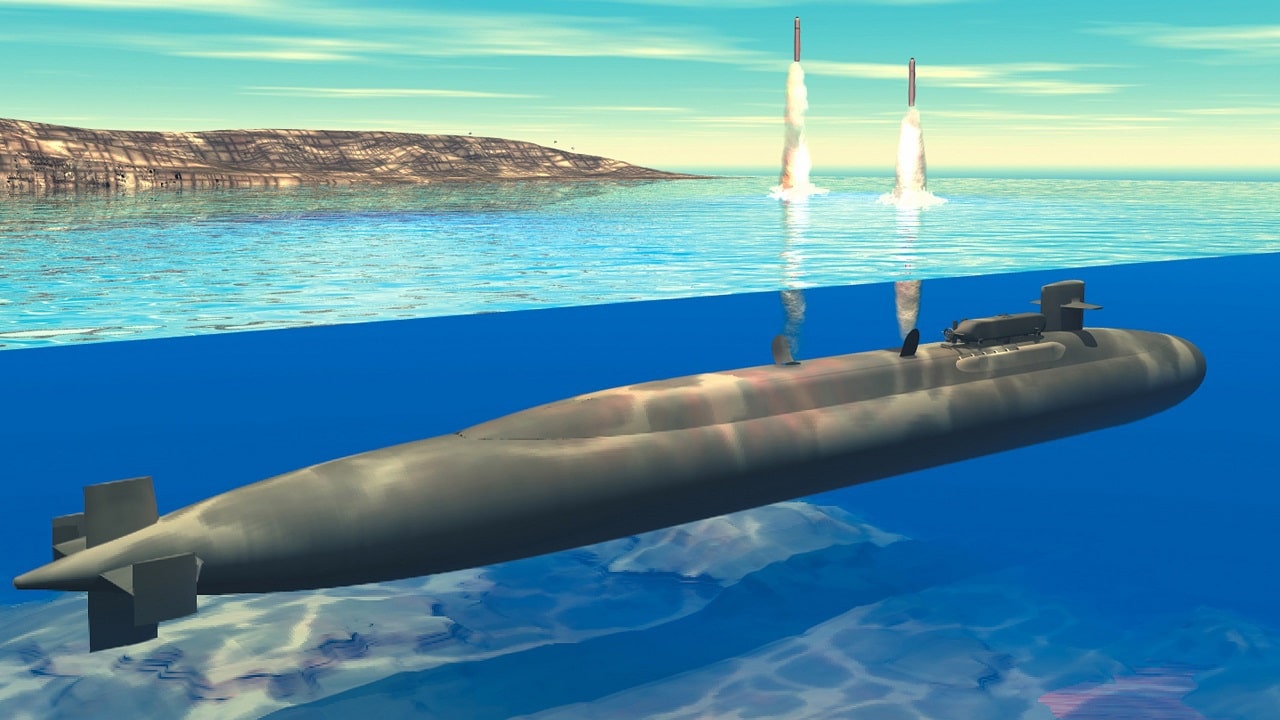Four of the Ohio-Class Ballistic Submarines Were Converted into Cruise Missile Subs – In response to the Strategic Arms Reduction Treaty (START II), which was agreed in June 1992, the United States Navy converted four of its oldest Ohio-class ballistic missile submarines (SSBNs) to guided missile submarines (SSGN). That included significant modifications to the submarines that included the installation of vertical launching systems (VLS), which were positioned in a “multiple all-up-round canister” (MAC).
Following the conversion, the SSGNs could carry up to 154 Tomahawk land attack missiles (TLAM), and in addition, two of the submarines’ twenty-four large vertical payload tubes were converted to lockout chambers for U.S. military Special Forces, most notably U.S. Navy SEALs.
Ohio-Class SSGN Facts
As the largest subs ever constructed for the U.S. Navy, and the third-largest submarines ever built, the boats of the Ohio-class were actually designed to carry the concurrently developed Trident submarine-launched ballistic missiles. A total of eighteen of the Ohio-class submarines were constructed by the Electric Boat Division of General Dynamics between 1981 and 1997.
Following the START II treaty, the number of U.S. Navy strategic missile submarines was limited to 14 beginning in 2002. Rather than simply phasing out or decommissioning four of the boats, the U.S. Navy opted to convert the oldest of class to conventionally armed nuclear-powered cruise missile submarines (SSGNs).
Electric Boat was awarded a contract in September 2002 to convert the four oldest of the class including USS Ohio (SSBN 726), Michigan (SSBN 727), Florida (SSBN 728) and Georgia (SSBN 729). 726 entered the shipyard on Nov. 15, 2002, and completed conversion in December 2005 and deployed for the first time in October 2007. USS Florida began her refueling and conversion in August 2003 and returned to the fleet in April 2006, while USS Michigan started her shipyard availability in October 2004 and was delivered in November 2006. USS Georgia completed the conversion process in December 2007.
The SSGN Program Office was able to complete the refueling and convert the four SSBNs to SSGNs in just over five years, and more importantly for U.S. taxpayers for considerably less cost and at less time than it would take to build a new platform.
Dual Crews
Similar to the U.S. Navy’s SSBNs, the four SSGNs now operate with two separate crews – a Blue and Gold crew. While most of the crew swaps are done in theater, the SSGNs are also based in home ports of Kings Bay, Georgia, and Bangor, Washington. These four Ohio-class SSGNs operate on a fifteen-month cycle, which consists of a three-month major maintenance period followed by on entire year deployed overseas. As a result of this schedule, the SSGNs are in theater nearly seventy percent of the time.
As the SSGNs are nuclear-powered, they can operate undetected for extended periods, to deploy the special operators or to launch its cruise missiles. However, unlike surface combatants, the SSGNs carry no defensive missiles.
While all four Ohio-class SSGNs will reach the end of their forty-two life cycle and are scheduled to be retired by 2028 without replacement, the U.S. Navy has been working to add the Virginia Payload Module, which contains four large vertical payload tubes, to future Virginia-class submarines beginning with the Block V submarines.
Yet, even with their retirement not all that many years away, the U.S. Navy could look to expand the capabilities of the SSGNs. Naval News had previously reported that the four aging boats could soon receive hypersonic missiles to increase the submarines’ capabilities. For the time those SSGNs have left, they could be remain a major offensive weapons platform.
Now a Senior Editor for 1945, Peter Suciu is a Michigan-based writer who has contributed to more than four dozen magazines, newspapers and websites. He regularly writes about military hardware, and is the author of several books on military headgear including A Gallery of Military Headdress, which is available on Amazon.com. Peter is also a Contributing Writer for Forbes.

